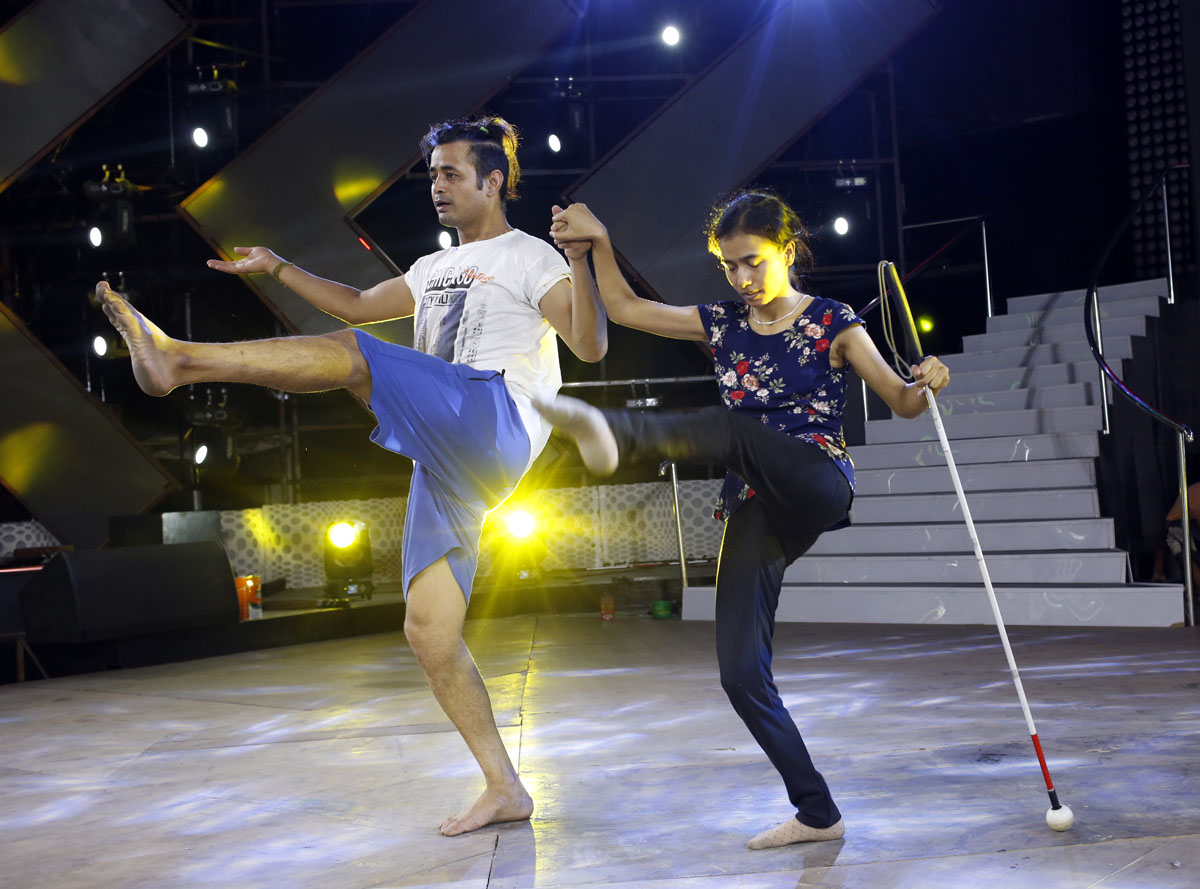Profile | Rijan Giri: Nursing his latent musical self
Rijan Giri, 35, is among the rare people who have been able to make a career out of their passion.
You might know him as the voice behind the popular Nepali song, ‘Kamal Ko Ful’, or you might have heard snippets of his single ‘Sandhya’ on YouTube where Giri’s channel has garnered over 800,000 views.
Those YouTube videos weren’t exactly planned in Giri’s grand scheme of things. Giri studied medicine and was pursuing a nursing career in the US between 2006 and 2013 . But this was not quite what he wanted to do in life.
“You study, you graduate and you start earning,” he says. “These things happen and life moves on, but I wanted something more.”
At the back of his mind were memories of his younger self. Giri had learned how to play the guitar, and with his uncles singing Nepali folk tunes, he had also picked up harmonium and later trained in vocals.
When he finally decided to pursue music, he returned to Nepal in 2014 and recorded his first single.
“It’s not that you can’t record songs in the US,” he says. “It’s just that I wanted my songs to be produced in the place I was singing about. And it was also a much cheaper alternative.”
Recording a single song takes thousands of dollars abroad, but with that money, he could record more multiple songs in Nepal, and even some music videos. “I’d still have money left for my return ticket!”
But his trip home in 2014 turned out to be more than just a reunion with his family and a music-production trip—it also became a lesson. Only after the recording of his first song did Giri realize just how much he didn’t know about music.
“When you’re a kid, you play a few songs on your guitar and you think you know everything,” he says. “But music is like an ocean. The farther you go, the more you see things you never knew existed.”
After returning to the US, he signed up for western classical vocal classes and learned music theory. When he next came to Nepal in 2017 he had almost 30 pieces of lyrics. With the help of his friends and family, he turned them into songs, some of which have been filmed.
In 2019, he would return after every four or five months, spending nearly half the year in Nepal. And in these three years, he was able to roll out his first album, ‘Anageenti Sapanaharu’, and then his folk fusion album, ‘Mari Lanu K Cha Ra’.
Much of his music is easily accessible on online platforms—YouTube and Instagram being the primary ones—but his online presence is limited. “I’m not in it for money,” Giri tells ApEx. “And I want my growth to be organic.”
This is one reason he’s not partnered with video production companies or hired popular figures to feature in his music videos. “The only thing I’m earning from my songs is self-satisfaction and I’m happy with that because I’ll probably never stop making music.”
The pandemic put a dampener on his plans to come up with a new album in 2020. But he returned to Kathmandu this year and has already recorded six songs since the start of 2021.
“I was lucky enough to work with guitarist Hari Maharjan on my upcoming songs,” he tells ApEx. During the second lockdown, Giri has been spending time at one of his friend’s home music studio.
“This album is turning out to be everything I’d hoped for, a mix of jazz and rock and everything in between. And I look forward to dropping the songs one by one,” he says.
Profile | The lively literary life of Saraswati Pratikshya
For Saraswati Pratikshya, writing is an act of bravery.
In her debut novel Nathiya, shortlisted for the prestigious Madan Puraskar, Pratikshya narrates the story of members of the Badi community in western Nepal who traditionally worked as entertainers for the Rana rulers.
The book, which won her the Pahichan Puraskar (Identity Award) in 2019, follows the lives of Badi women who, after the fall of the Ranas, had to resort to prostitution to make their ends meet.
“One day, I was working on my poems when I saw some Badi women protesting before Singha Durbar on TV,” says Pratikshya. “Many of those women were there in their petticoats, demanding that the society restore their dignity.”
It was at that moment that Pratikshya said to herself, “If I ever write a novel, it will be about Badi women.”
Pratikshya based much of the novel’s plot on stories of real Badi women, focusing on women of the Dalit community and shedding light on the systematic abuse they’ve faced both at the hands of men and society.
Nathiya got a lot of love from readers, she says, and the attention was better than expected. But the success also came with some pain.
“There were many risks involved in writing the book,” Pratikshya shares. “Several times, I had to put my life in danger by going to places I had never been to before and talking to people in uncomfortable situations”. She reckons that even her journey to collect these stories could one day be turned into a novel.
While the publication processes went relatively smoothly, much of the struggle came after the novel’s release.
First, she struggled to carve a space for herself in Nepal’s literary arena. “The struggle women writers face is unimaginable. If your writing is weak, you’ll be subjected to laughter. ‘Women and their futile gossips’, they will say. If you come off too strong, you’ll be labeled as ‘characterless’. Every step you take raises questions about who you are as a person.”
Aside from this, it took a long time for Pratikshya’s family to fully support her endeavors. Hailing from a Thakali community that was traditionally into business, it was considered uncharacteristic for Pratikshya to step into literature, which isn’t seen as financially rewarding.
Then there was a controversy surrounding her book as members of the Badi community filed a petition at the Supreme Court against the book’s contents, objecting that some terms the author had used were ‘offensive’ to the community.
“There were talks about the Supreme Court ordering me to make changes in the book, but they were only rumors. You can find the full text of the order online,” she says. “The court made its decision by respecting a creator’s freedom,” she says.
Despite the controversy around Nathiya, Pratikshya considers herself a lucky writer. “Each book I’ve written has given me a different identity,” she shares.
While Pratikshya is known as a novelist, she also enjoys writing poetry. She remembers carrying a diary-full of poems when she met her foster father, the famed writer Saru Bhakta, for the first time in 1999. By then, she had already developed a keen interest in writing—and she believes she would have become a writer even had she not met Sarubhakta.
“But he has shaped my writing,” she confesses. “His guidance has played a big role in my life. My writings matured at a young age and my thirst for knowledge grew 10-fold due to his influence.”
That very maturity and curiosity led Pratikshya to write her first poetry collection, Yadhyapi Prashnaharu (2005) when she was preparing her Bachelor’s thesis. “I was always writing poems,” she says. “And I finally had enough of them for a book.” Following this, she published her second and third collections of poetry, Bimbaharuko Kathaghara (2009) and Bagi Sarangi (2012).
Even though she’s now busy with her family business following the death of her elder brother, she hopes to publish a new collection of poems in the next couple of years.
Profile | The man behind Nepal’s most popular protest song
Raamesh Shrestha’s musical journey has been closely tied with politics. The song ‘Gau Gau Bata Utha, Basti Basti Bata Utha’ (a call for everyone to rise up for national development) has become synonymous with him and continues to reverberate on radio in small village neighborhoods, and at political rallies and protests.
The song became a protest anthem during the anti-Panchayat protests in 1990, as well as a rallying call for demonstrators during the Second People’s Movement in 2006. It continues to be the song of choice for any form of protest across the country.
“The song carries emotions that transcend time,” says 77-year-old Shrestha. “It resonates with most people—regardless of their age, ethnicity, or nationality.” Perhaps that is why it has been translated into 17 languages, including Chinese, Hindi and English.
And Shrestha sang from experiences. The singer grew up during politically tumultuous times. Born in 1944, he witnessed the fall of the Rana regime, the rise and fall of Panchayat, the decade-long Maoist insurgency, and the overthrow of the Shah monarchy. In these defining moments in Nepal’s history, Shrestha found solace in making music while his audience felt energized listening to them.
His music-making career began long before he released his first song. As a child, he was constantly surrounded by music-lovers. Shrestha’s father was an avid fan of Nepali songs and his sisters used to play sitar. At nine years of age, he had already learned how to play tabla. At 11, one of his school friends recommended that he be allowed to play at school programs and thus his semi-professional musical journey began.
Following his passion, in 1962, he took part in Radio Nepal’s folk song competition.
After the contest, he returned to Okhaldhunga where he taught in schools. But as more people fell victim to the Panchayat regime’s injustices in the mid-60s, Shrestha along with his friends Raayan, Manjul, and Aarim created a leftists group called Ralfa that traveled across the country singing progressive songs about social justice, equality, and patriotism.
“Fighting for our country was our duty,” he tells ApEx. “We hid and ran from the government so we wouldn’t be killed. During the anti-Panchayat movement, we lost countless friends and comrades who were murdered by the government.” It’s essential that these sacrifices be talked about, he adds.
This is why Shrestha has authored Baalapan Jeevanko, an in-depth account of Shrestha’s life and journey from an aspiring musician to being called ‘Janata ka Gayak’ (people’s singer.)
He’s also writing a second and a third book—a continuation of his life’s story which will encompass everything from the friends he lost while fighting for his country, to the cultural diversity he came across during his travel years, to the lost patrons of Nepali music.
Musicians today are considered celebrities while up until a few hundred years ago, traditional wandering singers were so looked down upon that they would have trouble getting shelter during their travels. But the celebrity status that is entrusted upon musicians doesn’t interest Shrestha.
“What we do is important,” he says. In his opinion, musicians deserve celebrity status only if they have a role in lifting up the lives of the common people by filling them with joy and awareness. Even though that’s becoming rare, he’s fascinated with the evolution of the industry over the past two decades. There are countless genres and subgenres to listen to, he says, and each brings a new story to the table.
“Music will always find a way to resonate with people—whether they’re from old vinyl records, cassette tapes and CDs as in our times, or snippets on social media apps now,” he says. If there had been a video-sharing app during his youth, he’s sure he too would have put it to full use. Even today, Shrestha is uploading his old songs to the YouTube channel (Sarthak Academy Nepal) so that the golden oldies are always listened to and never forgotten.
What bothers Shrestha is the trend of producing songs with the sole purpose of going viral and making money. “Nepali music will lose its charm and quality if this continues,” he warns.
He is determined not to let that happen. Shrestha, who has written 25 songs, composed music for around 150 songs, and lent his voice to more than 300, has five albums to his credit. He is still busy making music. The pandemic has put a stop to his work, as he can’t record in a studio now. But he is in the process of composing music for iconic old poems from celebrated poets and turning them into songs.
Even though the music industry’s future is unpredictable, Shrestha is at peace with the progress so far. “There will always be hurdles on the way. Songs will incite deep rage in people and then quell it like a balm. Some music will disgust the audience and then disappear into crevices of the internet and some will be revisited and sung decades after its making,” he says. But Shrestha has complete faith in today’s youths: “I believe they will do justice to our political as well as musical legacy.”
Obituary | Rajesh Hari Joshi: Championing chess in Nepal
Birth: 10 April 1956, Lalitpur
Death: 13 June 2021, Lalitpur
Rajesh Hari Joshi didn’t play competitive chess, but his contribution to the development of the sport in Nepal is less than none.
Joshi, who formally began his engagement with the sport 15 years ago after being elected vice-president of the Makwanpur Chess Committee, took charge as the fourth president of the Nepal Chess Association in 2007.
The numbers speak for themselves.
It was under his guidance that the first rating competition was organized in the country. Before that, there were only a handful of internationally rated players all over Nepal. At the end of his two tenures in office, the number had grown to over 600.
Joshi was also keen on getting Nepali arbiters on the international platform. Due to his endeavors, the country now has 10 international arbiters, 20 International Chess Federation (FIDE) arbiters, 50 national arbiters, and 50 arbiters-in-training. There were again only a handful of them before Joshi entered the scene.
His contribution wasn’t limited to the sport’s promotion in Nepal. Joshi also helped spread the game’s global appeal. During the 2014 FIDE Congress, he was elected its member as well as a member of its ethics community. He was re-appointed to the ethics committee in 2018.
Joshi also presided over Asian Zonal 3.2 area that included Nepal, Bangladesh, Bhutan, Maldives, Pakistan, and Sri Lanka. Chess championships such as the International Grandmaster Competition, Asian Zonal Competition, and South-Asian Competition were held under his leadership. Nepal’s Manish Hamal became the first FIDE master in the country during Joshi’s tenure.
Joshi was also actively involved in the cooperative movement. He founded National Co-operative Bank Ltd and served as an advisor to the District Co-operative Union Ltd, Lalitpur, and Multipurpose Co-operative Union Ltd, Lalitpur. He also worked as vice-president of Ganesh Man Singh Memorial Health Co-operative, and executive president of National Development Co-Operative Society Ltd, Lalitpur.
On 13 June 2021, Joshi suffered a heart attack and was pronounced dead on arrival at hospital. He is survived by his wife and two children.
Vox Pop | Football fandom really has no age bar
With the kick-off of Euro 2020 and Copa America 2021, there is now a veritable football fiesta. Amid the Covid-19 pandemic, the football governing body of Europe has allowed a certain percent of the seats in the stadium to be filled with spectators while the South American football federation is holding all games behind closed doors. These covid-related measures seem to have done nothing to dampen the spirit of Nepali football fans though. ApEx talked to 10 individuals about their most memorable football memories and incidents.
Bharat Kumar Bhattarai, 71
I started following football after 1990. We used to listen to commentary on FM radio. But lucky me, I got to watch the 1994 World Cup on television. Although Bulgaria knocked out my team Germany in the quarterfinals, I enjoyed the final between Brazil and Italy.
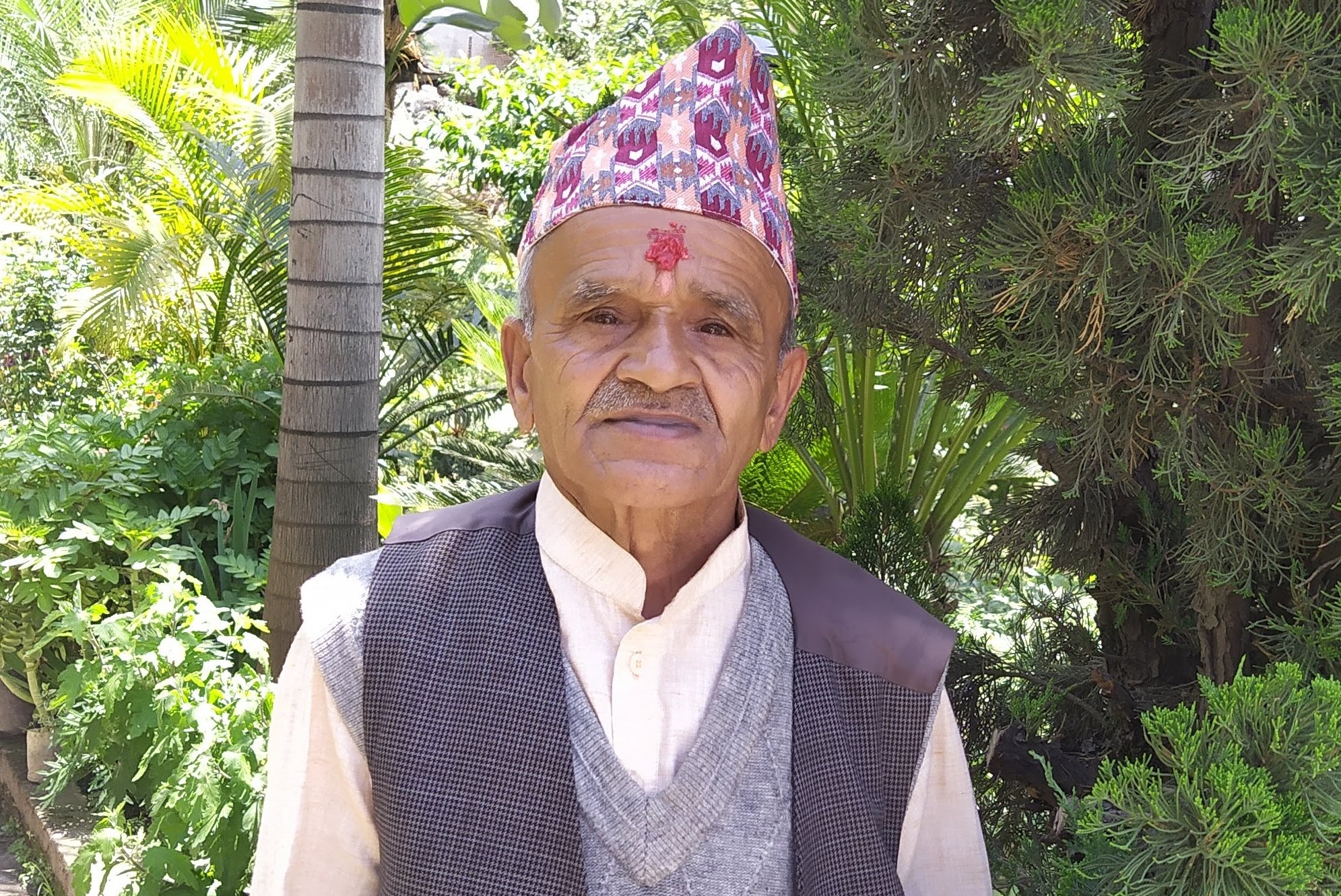
I love the attacking football Germans play and hope they will win the Euro this time. The team had an embarrassing run at the 2018 World Cup despite being the defending champions. Because of my age, late-night match timings don’t feel comfortable, yet I follow the tournament whenever I can. Also, I wish for speedy recovery of Danish midfielder Christian Eriksen who collapsed from cardiac arrest during a game a few days ago.
Krishna Bahadur Karki, 65
An unpopular opinion—I support no team and I enjoy every clash. Enjoying every bit of football is only possible when you don’t expect ‘extra’ from the teams. Only a few people enjoy the game this way.

How can I forget the infamous headbutt from Zinedine Zidane on Marco Materazzi during the final of World Cup 2006! Zidane shouldn’t have returned to the team after announcing his retirement. He single-handedly carried the team to the final, but then the headbutt marked a bitter end to his extraordinary career.
Dinesh Dhungel, 63
I have watched only a few highlights of the Euro Cup this time but I have many fond memories of watching World Cups with my friends. Back when we were young, we used to stay up all night, drinking beer and cheering for our favorite teams. I’ve always enjoyed games with teams from England, Italy, Germany, and Argentina. I was the biggest fan of Diego Maradona and followed most of his games. Now I feel the same way about Messi.

Our friends never bet on football games. No, that was reserved for when we played with each other.
We didn’t have football equipment when we were kids so we’d improvise. The place where Hotel Narayani stands today used to be a large ground where anyone could get in. And that’s where we played most of our games. The St. Mary’s School grounds used to allow us to play there too sometimes. It was never really serious, just fun with friends, and now when I think about it, it gave me a reason to exercise.
Ramji P Koirala, 59
The Falkland Wars in 1982 was a hot topic in Kathmandu and it was the first time I heard of Argentina—the name fascinated me. Then there came the 1986 World Cup, which we Nepalis got the chance to watch on NTV. I was excited to watch the Argentine national team for the first time. I still remember Maradona’s madness and infamous hand-goal during the breathtaking final against West Germany. I was in instant love with the Argentine football team.
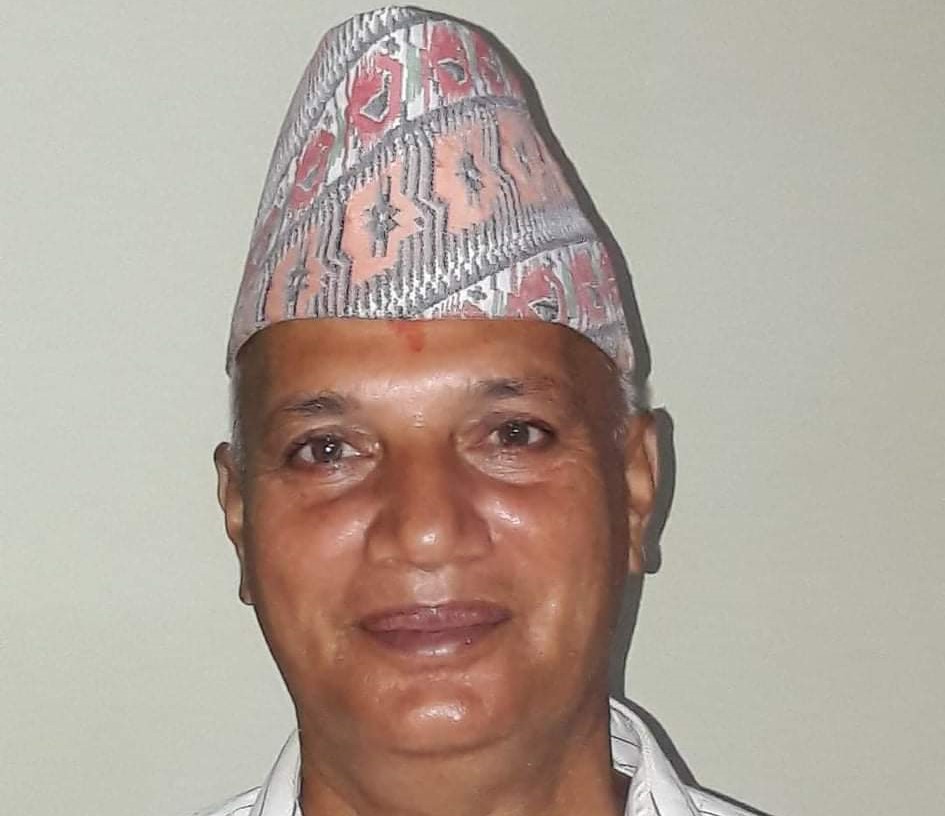
I am always updated about football but I can’t watch games late at night. Old age sucks, you know, haha! Football teaches us a lot about teamwork, passion, and love. I love this beautiful game and hope to see Nepal on the world stage soon.
Atmaji Pant, 56
I’ve been watching football since 1990. I made some of my favorite memories while watching the World Cup. I remember the one time I used to go to my friend’s house almost every day for a month so we could watch the games together. We positioned his TV diagonally to the chairs, so we had to tilt our heads and look to the side to get an unobstructed view. Sitting in that position for such a long time gave me the worst neck cramp, but I still kept watching.
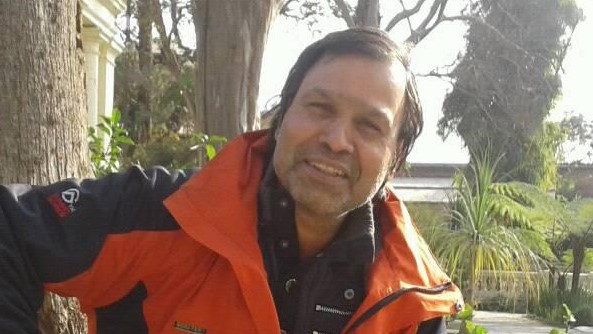
We won’t be going to each other’s houses this year to watch the Euro Cup or Copa America but I’ll still be watching both the tournaments. I love Belgium and hope they win the Euro. Holland are pretty strong contenders too.
Kamala Neupane, 55
I didn’t have deep knowledge of football, even now I don’t, but it has given me memories of a lifetime. My brothers were Brazil supporters, so I also used to cheer for Brazil. Our neighbor had a television set and all of us used to watch together. Sometimes, we recall those moments with friends and they still give me goosebumps. Nostalgia!
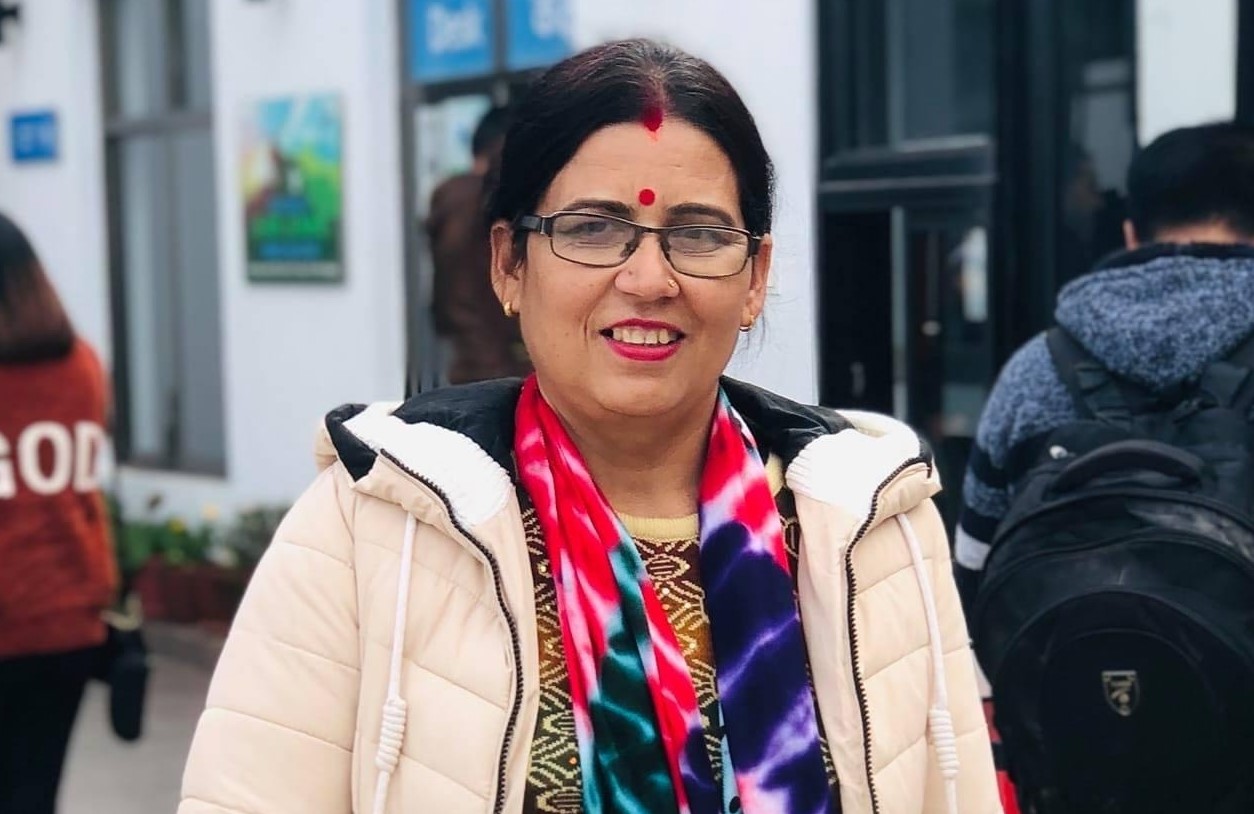
My son passionately follows football and I give him company once in a blue moon, otherwise, I am not much into it these days.
Phanindra Ghimire, 53
The 1998 World Cup final, Brazil vs France, was my first ever football-watching experience. Despite France’s victory, I became a fan of the fiery Brazilian team. Ronaldo, Rivaldo, Cafu, Roberto Carlos are gems of football! The next World Cup in 2002 and my team lifted the trophy. I will never forget the beautiful moment when I chanted ‘Brazil! Brazil!’—lifting my two-year-old son in the air.
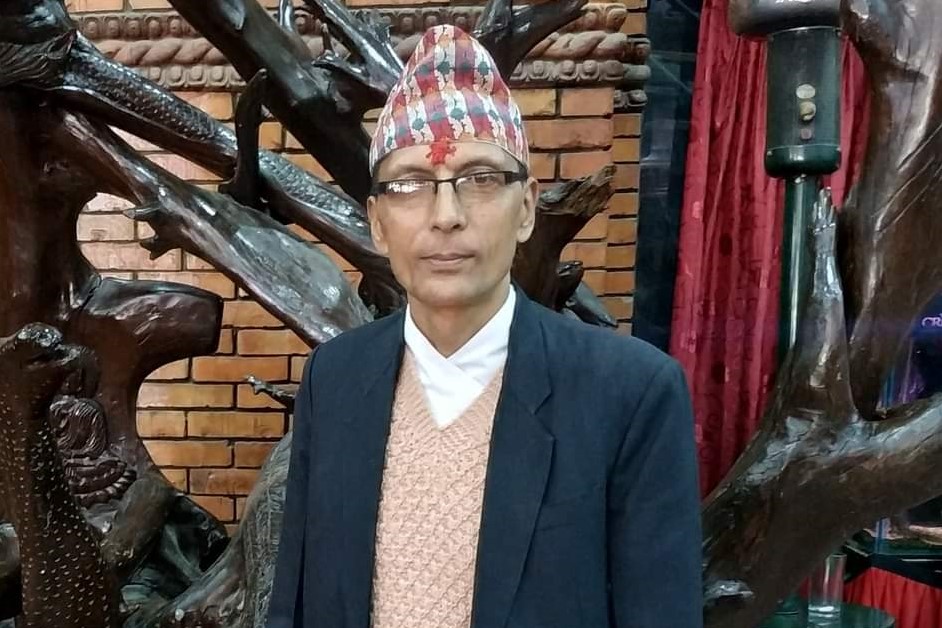
I still follow each match Brazil plays. My son also supports Brazil (he had to) and we make a great company. We both cried when the home team lost 7-1 to Germany in World Cup 2014. But now, I am so happy that our champ Neymar Jr. is only 9 goals away from surpassing the national record of the legend Pele. He already has 116 goal involvements in his 107 caps—such a beauty. This boy is going to win us the World Cup for sure. I want to lift my 21-year-old son again, chanting for my team.
Prabhuji Pant, 53
Portugal has perhaps the best team in the Euro Cup besides Belgium. I’m a big supporter of Christiano Ronaldo, so I’ll be supporting his team. Of course, no one will ever live up to Pelé for me. Growing up, he was the one I looked up to most. Me and my brothers used to play football in Dhobichaur ground and Pele was who I wanted to be like. I remember being 11 years old and going to watch league matches at Rangasala with my family. There was a place called Guccha Tol that had a small ground—that couldn’t hold over three players from a team at a time—and we used to play there, making our footballs, goal posts, and even rules.

I’m not one to gamble or take part in bets, but I’ve been in a lot of lottery ticket games and won a quite few too. You could say I’m lucky when it comes to football.
Birendra Paudel, 51
I’ve always been a huge fan of Brazil’s football team and that’s exactly the team I’ll be supporting this Copa America. I don’t have any specific alliance for the Euro Cup, but I believe Belgium is a contender. This team is one of the best ever and they’ll probably reach the finals this year. Football is something that’s been a part of my life for a long time now. We never had the equipment to play football growing up. So we usually made do with rubber balls and a heap of clothes tied together to look like a sphere. The grounds were small and the goalposts even smaller.
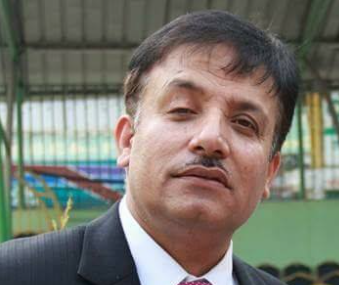
I remember being around nine-year-old and listening to the 1978 FIFA World Cup commentary on the radio. It was only during my high school days that I got to watch the finals on television. In 1986, when the World Cup was televised in Nepal, I sat down and watched the entire tournament even though the TV display was unclear with strange noises coming every few minutes.
After watching the games became a norm, me and my friends used to make lottery tickets after collecting money from everyone, where each person picks a country from a bowl of papers, and whoever gets the winning team gets all the money. Right now, I’m getting little sleep, trying to catch every game in the middle of the night while the rest of the family sleeps.
Subasana Thapaliya, 50
When I was 13, I was a national-level runner. I was always into athletics and that included running, so it’s not a surprise I used to play football with my brothers. There was this one time during my school years when Bagmati zone’s women football team didn’t have enough players, so they included me just to fill the quota. I knew little about the game since I only played for fun with family—and we lost the game—but it’s still one of my most cherished memories.
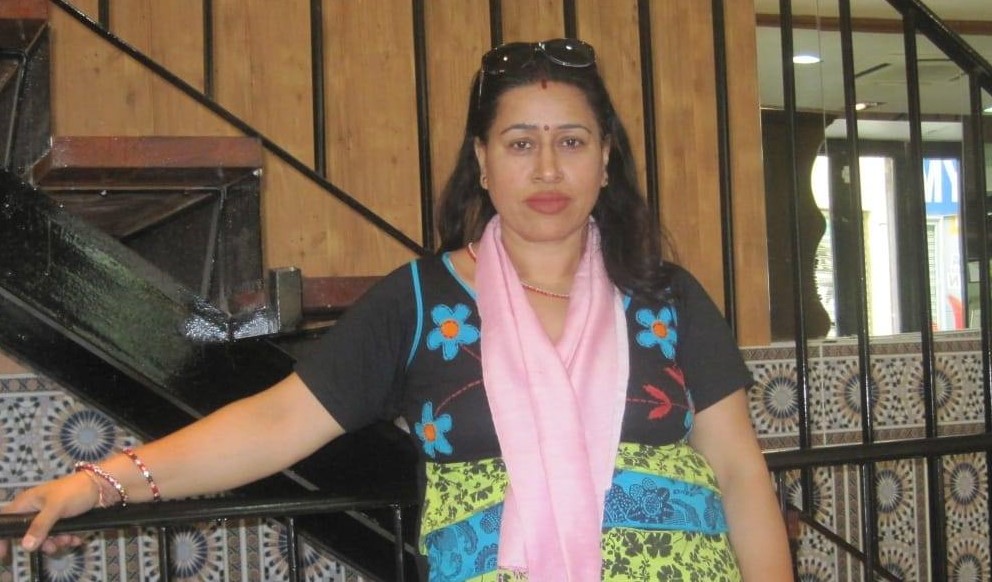
Even today, I still watch all the football games I can. Even if my husband and sons fall asleep, I’m the one watching the Euro and World Cup through the night.
This year, I’m rooting for Spain because I’ve been there many times and feel a personal connection to the country’s team. I also enjoy their gameplay. Football is a game of passion and stamina—and I love watching teamwork between the players. Most memories I have regarding football are fun, but there is one that saddens me to this day. The Escobar murder after the 1994 FIFA World Cup still breaks my heart.
Profile | Deeya Tamang: Succeeding in style
On returning from London after graduation, Deeya Tamang tried to pursue different career paths—working at an event management company and even on television for a while—but none of it satisfied her. She wanted something to call her own.
Back in 2017, there were very few online shops in Nepal and only a few of them sold clothes. That was when Tamang, who was in her early 20s, decided to step in with ‘T’s Armoire’.
“I was always very passionate about fashion and clothing,” Tamang shares. “So I thought I’d do something on this line,” says Tamang, who took a few months’ fashion course at IEC College before venturing into her new business.
T’s Armoire was one of the first online stores in Nepal to bring in-house models to showcase their products professionally. “I wanted to be concise when it came to the content we put out,” Tamang shares. “I learned early on that you have to be transparent with your customers.”
Today, there are few young adult women in the valley who haven't heard of the brand. T’s Armoire is popular for its unique and edgy products that push the boundaries of Nepali fashion. Aside from its quality products, Tamang’s brand is also appreciated for product displays on in-house models rather than on mannequins or lush carpets like other online stores.

“I wanted people to know exactly how the clothes would look on their bodies,” she shares. It was a decision that completely changed her brand’s look. Today, she has multiple models with different skin colors, ethnicities, and body types to advertise her clothing.
Along with in-house models, the brand also has two in-house designers, including Tamang herself. Even though she prefers comfortable casual clothing, she isn’t afraid to glam it up. And in her designs, she follows the same blueprint, glamorous but comfortable.
Gone are the days when she had to rely on wholesalers and import crews. Today, T’s Armoire makes its own designs and sends them to tailors in Nepal, Bangladesh, and even China.
“I want to experiment with more Nepali textiles and ingredients,” the entrepreneur tells ApEx. Much of her shop’s products are Western fashion for women but she wants to take the Nepali style to global markets.
And she believes her plan will work because she sees many orders coming from foreign countries. But Tamang says success didn’t come to her easily. “I’ve made a lot of mistakes in this journey,” Tamang says. “But I learn from each mistake and never repeat it.”
It took a long time for her to gain her customers’ trust—especially in a society that bought cheap clothes from retail shops and only after trying them on. Now, Tamang feels she has earned that trust.
But her ambitions know no bounds. Her purpose has begun to take shape and she wants what many dream of but few achieve—global recognition. Her failures have taught her far more than has success. “I was fired from the event management company I worked for and until a few years ago, I was just a young dreamer who had started a shop with the little savings she had,” she shares. “And today I have my own successful company.”
“I think I’m the definition of self-made,” Tamang says. “No one believed in me at first and I had to prove myself to them.” With the brand’s outlet in Jhamsikhel turning into one of the most sought-after fashion hubs in the Valley and the online store amassing over 108,000 followers on Instagram, Tamang feels like she has.
Obituary | Narakanta Adhikari: A model civil servant and litterateur
Birth: 6 January 1920, Lamjung
Death: 10 June 2021, Lainchaur
Narakanta Adhikari invested 47 of his 102 years in the civil service, where he worked as auditor general, and secretary at various ministries such as finance, defense, and agriculture. But Adhikari’s illustrious bureaucratic career isn’t his only enduring legacy.
Those who knew Adhikari call him a gentle soul and someone who was fun to work with. Adhikari, who completed his schooling and Bachelor’s degree from Durbar High School and Trichandra College and then graduated in law, was a man of integrity. He stayed away from partisan politics and knew how to handle pressure from powerful people when it came to his job.
Adhikari, during his career in civil service, worked with many people, including rulers from the Rana dynasty. When those in power sought favors, Adhikari always resisted and even refused to take orders at times. Because of this, he was often transferred from one station to another—and his promotion was halted on several occasions for noncompliance.
Besides his occupation, Adhikari was also known for being a patron of education. An avid reader himself, Adhikari donated 20 ropanis of land and Rs 1 million for the construction of a school and a high school in his Lamjung hometown. He and his son donated around Rs 800,000 for the construction of a library at the same place.
Adhikari also wrote many Nepali books, with his first published work coming out when he was 76. Some of his better-known works are: Patanjali Yog Sutra (2004), Amarapuriv Vanda Mathiko Nandan Ban (2007), Geeta: Maile Bujeka Kehi Kura (2016), Chintan, Manan, Adhyayan Garda Ramro Huncha Ki! (2009), and Shiva Mahimn Stotra (2016). He also published much in Sanskrit.
Chintan, Manan, Adhyayan Garda Ramro Huncha Ki!, which was published when Adhikari was 90, is a guide to duties one has to perform each day of the year to be successful. His literary works were influenced by ancient philosophers and religious scholars.
At the age of 13, Adhikari tied the knot with nine-year-old Ramadevi Acharya, a distant relative of Aadikavi Bhanubhakta Acharya’s descendants. The couple had two sons and four daughters. Growing up, Adhikari was strict with their education. Not just them, he also gave shelter to students from Lamjung who came to Kathmandu—until they found a proper hostel or room.
Upon his demise at the age of 101 at his Lainchaur residence, many Lamjung folks mourned the passing of the ‘Guardian of Duradanda’. He is survived by two sons and a daughter.
Profile | Inspiring a new generation of dancers
When Keshav Thapa was growing up, he liked dancing. But there was no one to teach him how to. The only option was to observe dancers and film stars and to come up with his own moves.
“No one taught me how to dance, I learned it on my own,” says Thapa, Today, founder of Iris Dance Studio and lead choreographer for Miss Nepal pageants. “I wasn’t trying to copy anyone, I was simply doing what I loved, dancing to the tunes on reels and music cassettes,” Thapa remembers.
“I grew up with little to no access to things that could help me improve my skills,” Thapa tells ApEx. “There was no internet back then. And we’d rarely get movies or music videos.”
Little did he know that his hobby would soon become his career. It was only when he received a full-ride scholarship to attend a dancing school in Kolkata—for which he was selected after auditioning dozens of applicants—that he understood that he had it in him to become a dancer. After graduation, Thapa planned to head to Mumbai like the rest of his colleagues, but he understood that competition in a big industry such as Bollywood would be extremely tough. “I had no yearning to fight for scraps,” says Thapa.
Instead, he came home to Kathmandu, where he established his studio, started conducting workshops and choreographing for the Miss Nepal titleholders who go abroad for international pageants. As he continued working in the capital, he soon realized that Kathmandu was full of talented dancers, and it was areas outside the city that needed his skills.
His resolve was further bolstered after he participated in the reality television show Dancing with the Stars Nepal to dance alongside Sristi KC, a blind social activist advocating for equal rights for the visually impaired and the founder of Blind Rocks Nepal. Thapa did the choreography for most of their performances throughout the show.
“I was extremely hesitant to participate in the show,” he says. “When you’re a dancer and choreographer by profession, people expect you to win the title no matter what.” He felt the pressure from the audience from the very beginning. But his feelings changed after being paired with KC. “After being introduced to her, my goal to win morphed into a determination to enjoy the journey of the program. Teaching Sristi dance was a completely new experience for me.” He feels that, even though he taught Sristi to dance, he learned far more from her.
After the show, he headed to Surkhet and opened his dancing program there. What was even more surprising was the enthusiastic feedback he received during the process. Just during the first four months before the second lockdown, Thapa trained around 140 students.
Among them, more than 70 were children. Since it would be difficult to start with the technicalities of dancing, he first started with cardio, Zumba, and simple dance movements. For the kids, he added more skills to his programs such as public speaking and personality development activities.
“That’s one thing I was never prepared for,” Thapa says. “I had always viewed celebrity life from the media’s lens. But once people started knowing me, it was never as glamorous. The trick is to be able to handle yourself in tough situations. You need to learn to compromise and have the work ethic that can pull you outside the bubble of constant pressure.”
Since the lockdown, pressure has eased a bit. Thapa hasn’t been unable to continue dance lessons in Surkhet. He conducted a few online classes for members of Blind Rocks Nepal. But the online classes proved to be difficult since he was only limited to verbal communication with blind participants.
But he has plans to continue the classes after the lockdown ends. Thapa will return to Kathmandu to prepare Namrata Shrestha, Miss Nepal 2021 for the international Miss World pageant and will also continue teaching at his Iris Dance Studio.
But his heart will still remain in Surkhet. .“I remember what I had to go through. As a dancer, I had no one to look up to,” Thapa says. “And I don’t want the next generation, no matter where they’re from, to not get to do something just because they didn’t have someone to teach them.”










